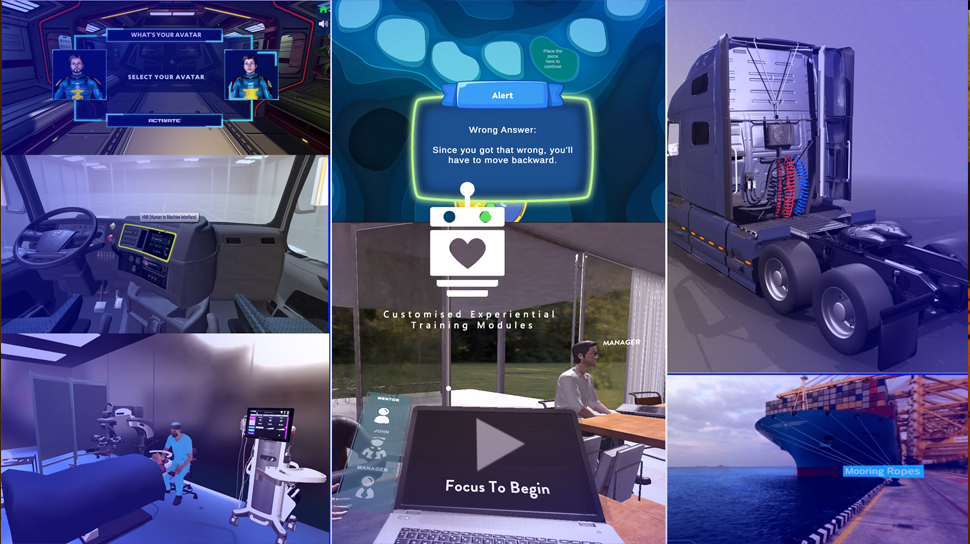

It is a noble profession, medicine. And a difficult one.
The human body, for all our incredible understanding of it, continues to throw up surprises every day. There will likely never be a time that technology would be able to replace the human instinct of an experienced physician. But technology has a long tradition of arming physicians with more and more sophisticated tools in their war against disease.
As every wave of technological advancement in the wider world brings new innovation to Healthcare, so it is with the paradigm-shifting technology of the current age – Experiential and Immersive Technologies.
In fact, it’s hardly even new anymore. Experiential and immersive technologies, such as virtual reality (VR) and augmented reality (AR), are increasingly being used in healthcare to improve patient outcomes, training for medical professionals, and research.
In exploring the application of Experiential Technologies to Healthcare it is useful to look at it from the perspective of what these technologies can essentially do.


Experiential Technology can Immerse you in a world that’s different from the one you’re in. Just that spatial audio-visual illusion alone can have applications for human health.
When we think of Healthcare, we usually think almost exclusively of the relationship between a doctor and a patient. And that’s natural – that ancient relationship between the healer and the healed is at the heart of the entire industry.
But we often forget another important relationship. The one between the doctor and the wider body of Medical Science itself. After all, Medical Science is constantly advancing. And for a doctor to be able to apply the latest medical understanding, a newly developed technique, or an updated and improved drug, the doctor needs to be informed of these advancements. To a significant extent, that responsibility falls on the shoulders of the communication between the doctor and the Pharmaceutical Industry, represented by the Medical Rep, whose job it becomes to somehow capture a few moments of the overburdened doctors’ invaluable time and then hold their attention long enough to inform and impress them enough that they’d consider a new formulation. Or, for that matter, that they’d prescribe one company’s drug over another – after all, it’s the business that funds medical research.



If a picture is worth a thousand words, an experience must be worth a thousand pictures. By harnessing cutting-edge experiential technologies, we have been able to create immersive learning experiences for doctors, reducing the time it takes for them to absorb new information, while simultaneously greatly enhancing retention, through the power of experience
Sometimes, this takes the form of a Virtual Reality exploration of the microscopic dance between pharmacology and human biology. Seeing molecules interact at a scale that is comprehensible to human vision can be enlightening in a way no detailed explanation can.
Sometimes, Augmented Reality is the best fit, as it was with the experience we created to illustrate the importance of Natural Vitamin E in infant nutrition, anchoring a complex 3-Dimensional Presentation to a tangible, physical presence.
But this ability of technology to create immersive illusions can find use in patients too.
For instance, getting medical care can be traumatic sometimes. In procedures like wound care, chemotherapy, or even childbirth, Virtual Reality has the power to distract patients from the discomfort and pain of the procedure by immersing them in a virtual environment. Recent advancements in the technology have made this even more effective. For example, some VR systems now include haptic feedback, which allows patients to feel physical sensations in their virtual environment, further distracting them from pain


One step above a passive virtual environment is an active one, an interactive environment which users actually engage with. At this layer, the applications expand even further.
One great example is in therapy. Experiential Technology is a powerful tool in helping patients with conditions such as PTSD, anxiety, and phobias. By recreating the triggers in a virtual environment, patients can safely confront and learn to overcome their fears.
At the ZEP Rehabilitation Centre in Pimpri, near Pune, Maharashtra, we employed a Projection Immersion driven Experiential Simulation that is being used to help children with Intellectual Disabilities master basic lifeskills, such as crossing a road safely. The system creates a safe virtual space in which to learn, step by step, and gain familiarity with the chaotic environment of a road crossing – which can be far more chaotic still for an autistic child.
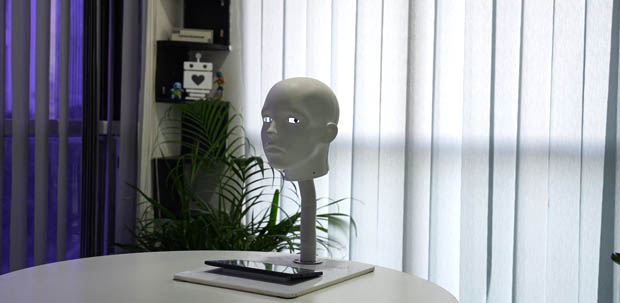
For patients with neurodegenerative diseases like Alzheimer’s, recent studies have found that VR therapy can improve memory function. The study involved patients being immersed in a virtual environment that triggered memories from their past, which helped improve their cognitive function
From the mental to the physical, Experiential Technology is also being used in rehabilitation to help patients regain mobility after injuries or surgeries. By immersing patients in a virtual environment, they can practice movements and exercises without putting too much strain on their injured areas.
This area is particularly enhanced by the integration of real-world physical and tactile engagement, rather than Pure AR/VR Experiences. To explain Vertigo to patients and caregivers, and to train them on the physical manoeuvres that can be used to diagnose and relieve vertigo, we built a Phygital Head – a fully-articulated model human head with sensors connected to a software on a Tablet that displayed the changes in the inner ear as the head is manipulated, guiding these manipulations with an animated, narrated and interactive tutorial.
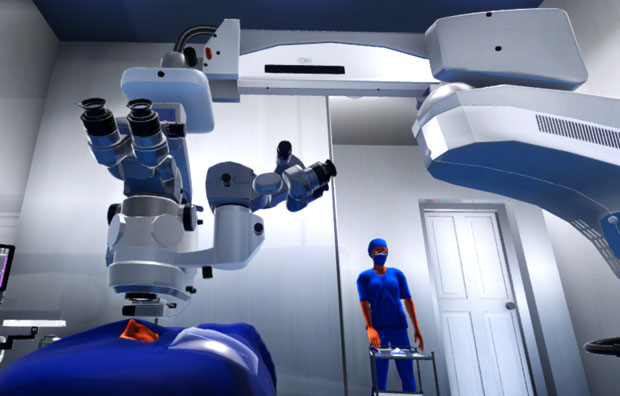
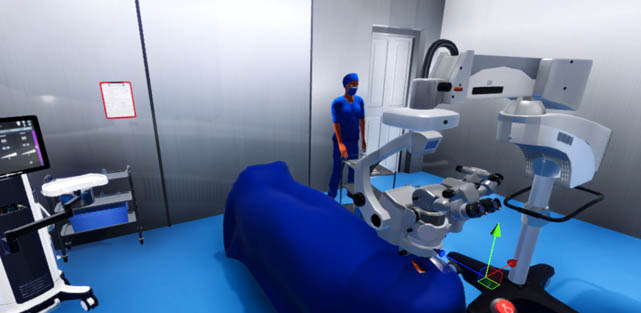
But even these applications of Experiential Technology involve coarse movement simulation. But the Technology has advanced to the point where movement tracking and movement simulation can be fine enough to be a reasonable approximation of reality.
And that means these technologies find synergistic application in the area of surgical training. Immersive technologies are now being used to train medical students and residents in surgical procedures. By using VR and AR, trainees can simulate surgeries and practice techniques in a safe environment without risking patient harm. Our VR Phacosurgery Simulation Trainer does just that for ophthalmic surgeons, providing a safe virtual environment in which to learn and master the subtleties of cataract phacosurgery.
VR simulations are becoming increasingly sophisticated, allowing medical students and residents to practice complex procedures in a realistic and safe environment. These simulations can help medical professionals gain confidence and experience before performing procedures on real patients.
They can also be used to devise new procedures for unexpected situations, and see the outcome on a virtual patient before trying an untested procedure on a living patient.
Even during surgery itself, Augmented Reality is being used to assist surgeons, providing real-time guidance and information about the patient's anatomy. This technology allows surgeons to see through a patient's skin and visualize the organs and other structures, enhancing their precision and accuracy during procedures.
And in advanced medical research, immersive technologies are being used to study the effects of drugs and treatments in a virtual environment. Researchers can simulate the effects of treatments on virtual patients and collect data on their responses without risking harm to real patients.
But for all the advancements in medical care, that ancient adage about an ounce of prevention remains as true as ever. People who are well-informed about their own health live longer and better lives. Fortunately, we have never before lived in a time so well-suited to patient education.
While Headset-based or eyewear-based VR and AR stand on the cusp of wider penetration in the general public, even with just today’s omnipresent technology – the smartphone – AR technology can be used to create interactive patient education materials, allowing patients to see and interact with 3D models of their anatomy and medical conditions. This can help patients better understand their condition and their treatment options.
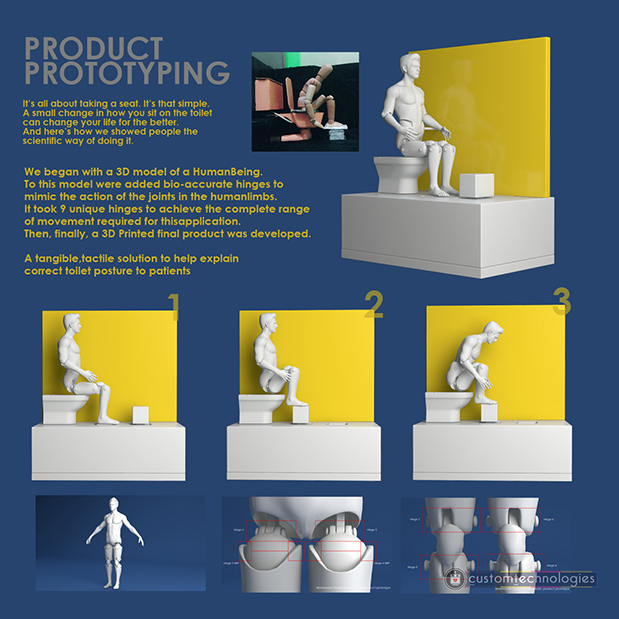
On the other hand, sometimes Experiential Patient Education doesn’t even really need technology. As in our Constipasana initiative, vividly illustrating to the public by means of a fully articulated human anatomical model, a simple lifestyle fix to beat chronic constipation.
But sometimes, what needs to be explained isn’t as straightforward as details of anatomy, or physiology. When we began working with MSD for their HPV Vaccination Awarness programme, the need was to communicate the risks of HPV and the importance of timely vaccination. This was an especially sensitive issue since it deals with the idea of sexual activity among young adults – a topic still often quite taboo for open discussion in this country.
This subtle messaging was delivered through a role-playing gamified experience, allowing patients – or rather, their parents – to guide themselves through the learning. Further, the product we created, HPV Uncharted, also customised the messaging based on the socio-cultural background and cognitive biases of the recipient.
As with any technology, the impact depends on effective application. But properly deployed, experiential and immersive technologies in healthcare have the potential to improve patient outcomes, enhance medical training, and advance research. As the technology continues to evolve, there is no telling what innovations we will see in the future.
Robotic surgeons that can think on their feet?
Holographic diagnosticians with access to the entirety of the world’s medical science and the case-history of every patient ever?
Scanning Beds that allow interactive 3-dimensional holograp
Maybe all of these.
Maybe none of them.
Maybe something we are not even able to imagine yet.
Only one thing is for sure. Whatever it is, it is inevitable.
